I am using the worktable design that is described in a series of YouTube videos by "LJ Magnum" (video is at bottom of the post). The structure is made up of 2x4's, so it is rugged and stable. The top is a pair 1x10 boards, so the top is fairly tough as well. The folding part is provided by 1" dowels, so it is stronger than it would be if I used hinges.
First the wood. Richard Arendt posted plans based on these videos at http://hiswordinwood.com/plans_and_tutorials. I needed two 8' 2x4's, one 8' 1x10, one 36"x1" dowel, Cut list is at the posted plans.
Next was cutting the legs and supports. 22.5 and 45 degree angles were needed so that the table will be stable when opened. I cut these using a jigsaw. A jigsaw going through 2x4s is pretty rough, so I went back over them with a oscillating multi-tool and a file and sandpaper afterwords. What I really need to do this is a circular saw.
 |
| Lumber cut by Home Depot |
To drill in holes in the legs and tabletop supports I used a cordless drill and a drill guide. 1" holes through 2x4s was a pretty heavy burden on an 18V cordless drill. I had to use both batteries. If I have to do this again, a corded drill may be useful. It was the first time I used a drill guide, which worked pretty well. One thing I learned is that when drilling a hole, it always makes a mess at the end. So I learned to detect when the tip of the drill bit broke through, then flipped it around and finished it from the other side. I used a chisel to cut away the mess (which was now in the middle instead of the service of the 2x4) and I used a round file to smooth out the hole (and made sure my 1" dowel would go through).
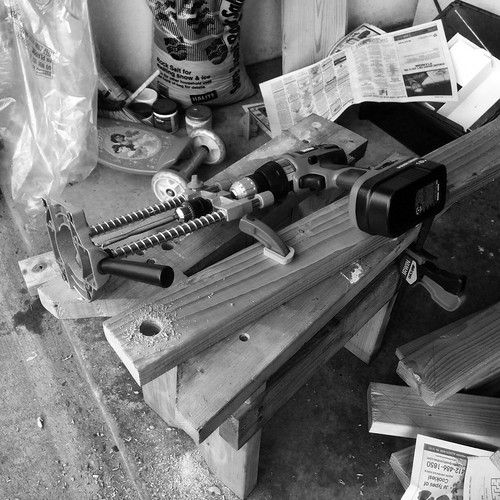 |
| Wolfcraft drill guide and cordless drill |
I used the plans to assemble the legs and top supports. A long dowel when across the top with the inner support and the inner pair of legs. On each side, the two legs and the outer leg and outer support were each connected with a short piece of dowel. For each dowel on each side, one piece was screwed in, the other piece was free to rotate around the dowel.
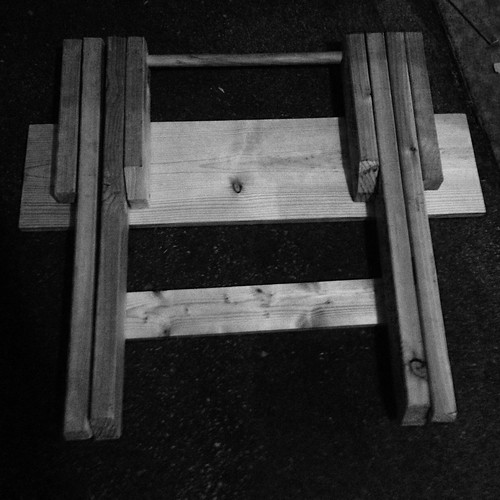 |
| Structural components of worktable |
Finally, I put the top on. First, for each of the two 1x10 boards, I picked a side to be on top (the one with fewer pits around knots). Then I picked the sides that best fit each other, using a surefile to make the fit a bit better. Then I drove screws to attach them to the supports (and messed up which support went with which top along the way, so I had to redo one side)
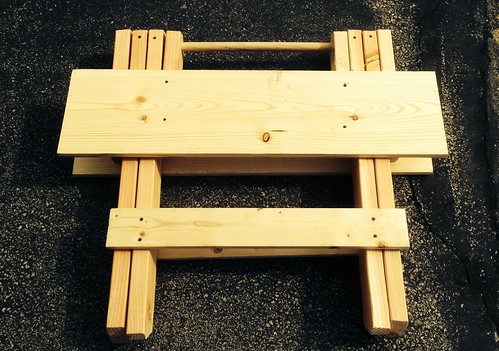 |
| Folded worktable top and front braces |
The result is a folding worktable. It is pretty stable due to the mass of the 2x4s that make up the legs and top supports and the use of the 1" dowels as joints, more than a commercial folding worktable with metal legs and bolts for joints would be. And it is fairly large. The fact that it is about standard table height also means that it can be used as a table for other things, like a folding table for eating that is much more stable than the norm.
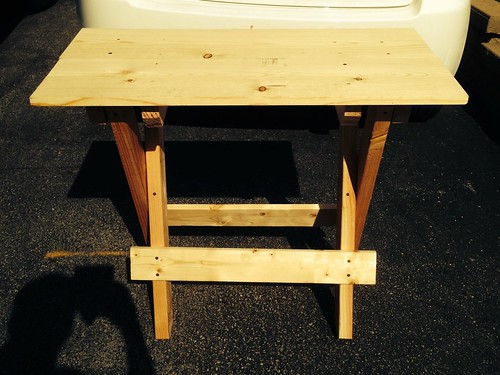 |
| Completed worktable |
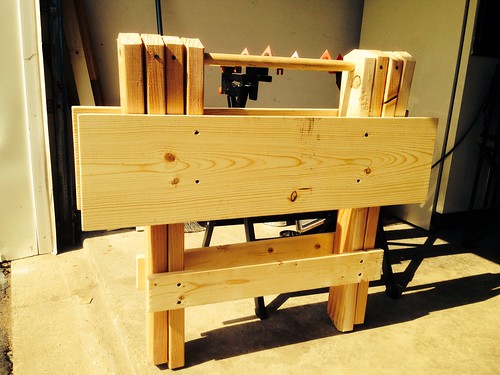 |
| Folded up worktable standing |
I'm pretty happy with this one. Folds up nicely so I can put it out of the way, and stronger than most comparable folding tables. And I learned a few things while making it. A successful project.
No comments:
Post a Comment